We’re often told, in various capacities, that aspects of how we exist today are as good as they’ve ever been. Or, taking it a step further, they’re as good as they’ll ever get.
In a motoring context, this equates to petrol combustion engines – ones sans forced induction and hybrid gubbins – being at the peak of their powers. Ever stricter emissions laws and the electric push are becoming too hard to ignore. Engines with large capacities and 12 cylinders are fast becoming endangered species.

So take this feature as more of a celebration than a comparison, for the Lamborghini Aventador SVJ (limited to 900 sold-out units priced at $949,640) and Ferrari 812 Superfast ($609,888) are the pinnacle of the breed.
These Italian thoroughbreds take automotive porn to the next level. It’s just a shame the thunderous acoustics that emanate, somehow being a sound you feel as much as you hear, can’t be truly heard via these pages. The V12 engine is a rarity in any shape or form, but it seems the unique, pure emotion both of these bona-fide supercars conjure might be, sadly, on borrowed time.
The displacement of the two glorious V12s is virtually identical at 6496cc for the Ferrari and 6498cc for the Lambo. Bore and stroke are not far apart either, with 94.0 x 78.0mm and 95.0 x 76.4 respectively. The same applies to the cut-out speed, where the Superfast eclipses its rival with 8900 against 8700rpm.
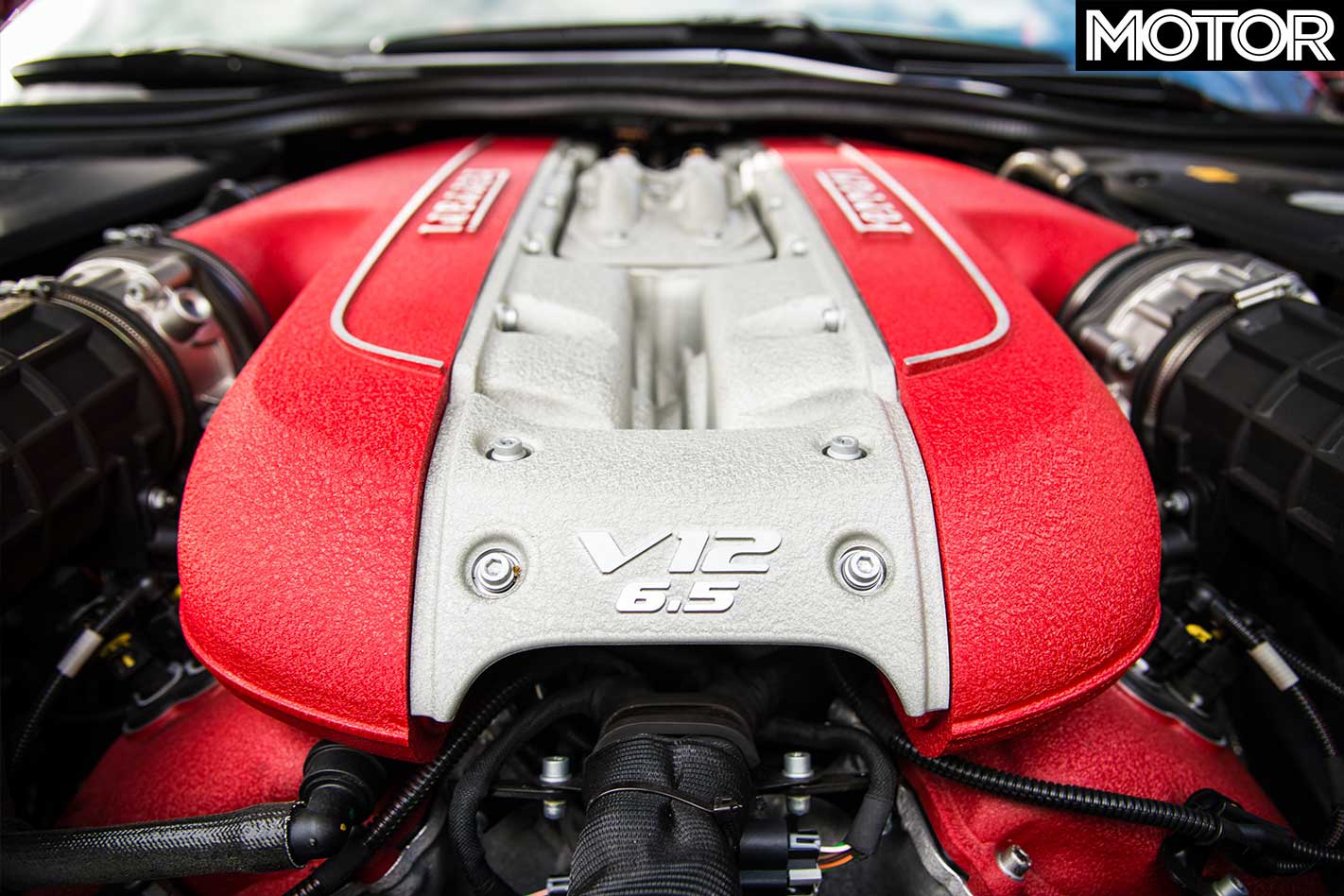
Thanks to the notably higher compression ratio, a variable-rate, free-flow intake and exhaust system, and the more pronounced willingness to rev, red bests green in terms of power. Maranello rules with 588kW against Sant’Agata’s 566kW, but the tables are turned in terms of torque, with the Lambo mustering 720Nm against the Ferrari’s 718Nm. Both, when dry, weigh 1525kg. So it’s a fairer fight than you’d think.
However, that’s numerically speaking. In reality, while the capacities and cylinder counts are all too similar, there’s a massive difference in character here. Both aim to entice you with distinct strengths and idiosyncrasies, yet are haunted by similar inherent imperfections like exorbitant fuel consumption – although you don’t buy an atmo V12 for economy runs. Also, the magical soundtrack will be music to the ears of anyone pouring over these pages, but it can equally grate with others who don’t care for the combustion cycle.
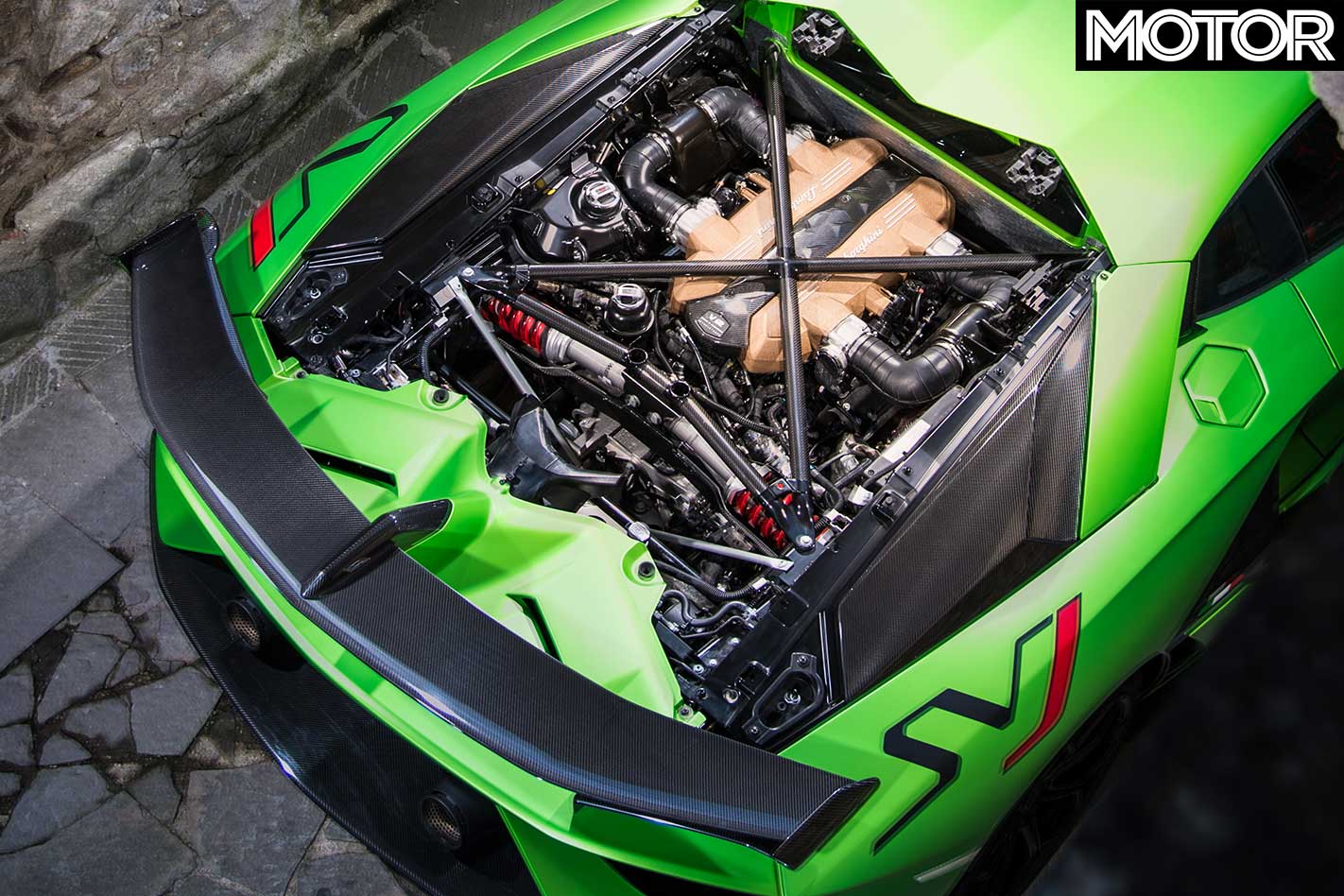
Although, in working-class Italy, where hoarse diesels and breathless three-cylinders rule, this supercar duo is received with enthusiasm and a sense of national pride. There’s no envy or finger waving at our antics. Being photographed, filmed and followed by curious fans quickly becomes the status quo.
Frustratingly, the two become a hassle on lightly trafficked roads, as those same onlookers are never prepared for a fast-approaching 1154kW (combined) on poorly maintained roads. It’s safer to escape to the hinterland, where traffic disbands and corners outnumber mind-numbing straights.
High in the mountains, it’s finally time to unlock these weapons. In the SVJ, an index finger lifts the red cage door protecting the button that kicks the raging bull into life. In the 812, the starter button is within easy thumb reach on the busy steering wheel. With both angry V12s firing on all cylinders, the sound is immense, enough to send shivers down your spine and induce myriad goosebumps.
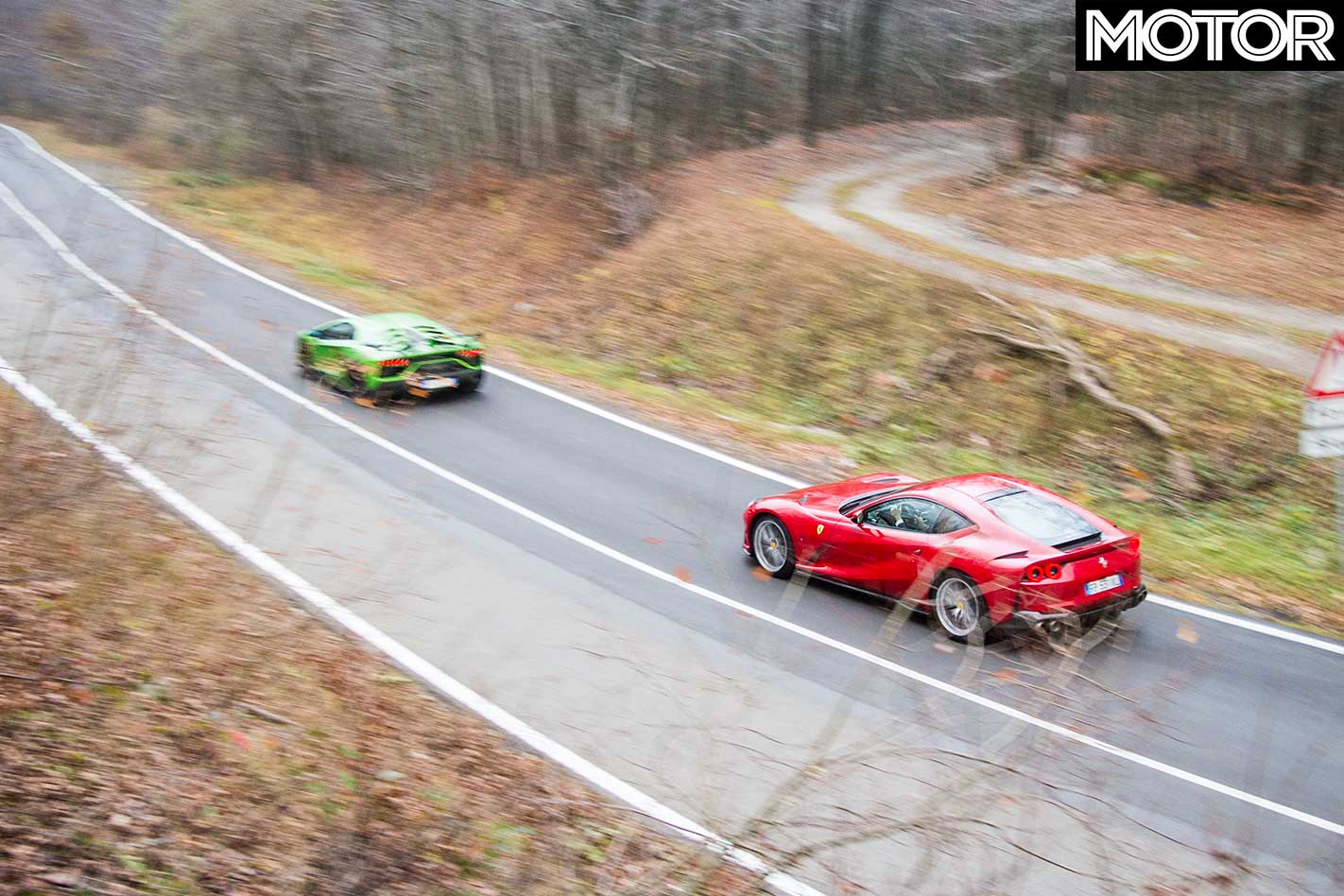
The Ferrari engine responds with vigour and settles on a high idle speed for a few seconds, substantiating its status as one of the wildest unassisted V12s in the Prancing Horse stable.
Its four camshafts and 48 valves then begin a relentless jam session. On the other side of the fence, the Lamborghini V12 first needs to remember its firing order before it’s prepared to scream into action. Still searching for the right rhythm, the idle speed eventually manifests itself, noisily clearing its many throats. A brief pull of the right paddle engages first gear, and like clockwork all the stray parts begin to work in unison.
The engine made in Maranello sounds better behaved. It is complex and massive, yet feels light-footed and emphatically urgent. In Auto and Sport modes, the transmission shies away from high revs to the point an Alfa Romeo Giulia Super feels angrier and more committed. In Manual mode, however, the rev symphony heightens gear by gear before reaching an earth-shattering crescendo. When pushed, both cars can be as noisy as the law permits.
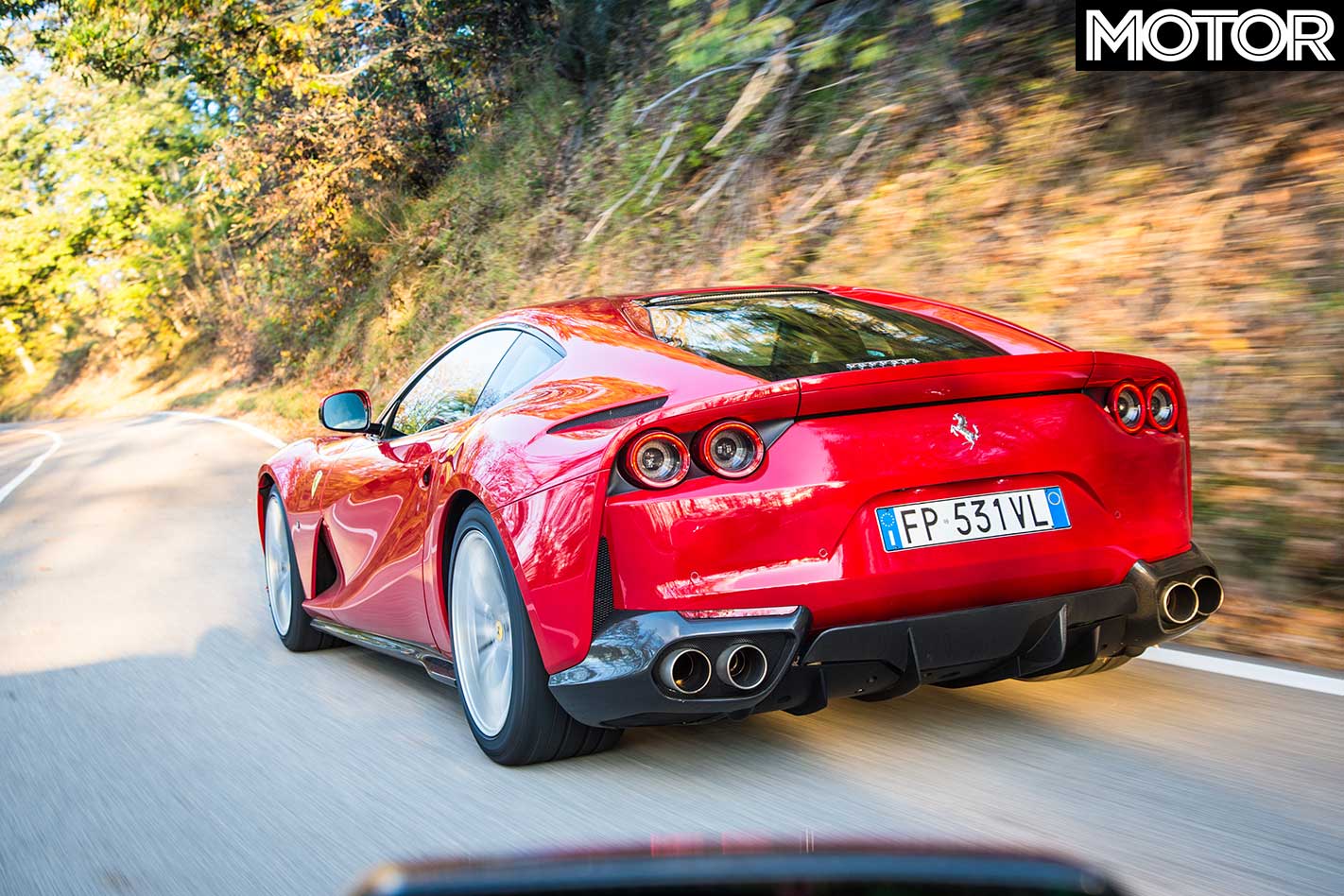
Aside from the ensemble, both of these cars are all about the performance figures. The SVJ can accelerate to 100km/h in 2.8sec, 200km/h in 8.6sec and go on to a top speed of 353km/h.
Devoid of all-wheel drive, the 341km/h 812 Superfast loses a tenth to the Aventador to 100km/h, but flips that on its head to be seven-tenths ahead by the 200km/h marker. How come? It’s all due to the Superfast’s rapid-fire seven-speed dual-clutch transmission, which changes gears without losing momentum. Conversely, the Lambo is handicapped by its jerky and slow sequential ISG transmission.
The throttle response of the Rambo-Lambo V12 is instantaneous. It’s like unleashing thunder and lightning. So you better think twice before deactivating ESP because imminent danger is only one unforeseen hazard away if you do. AWD is clearly a help, but it isn’t a saving grace given that the torque split clearly favours the rear wheels.
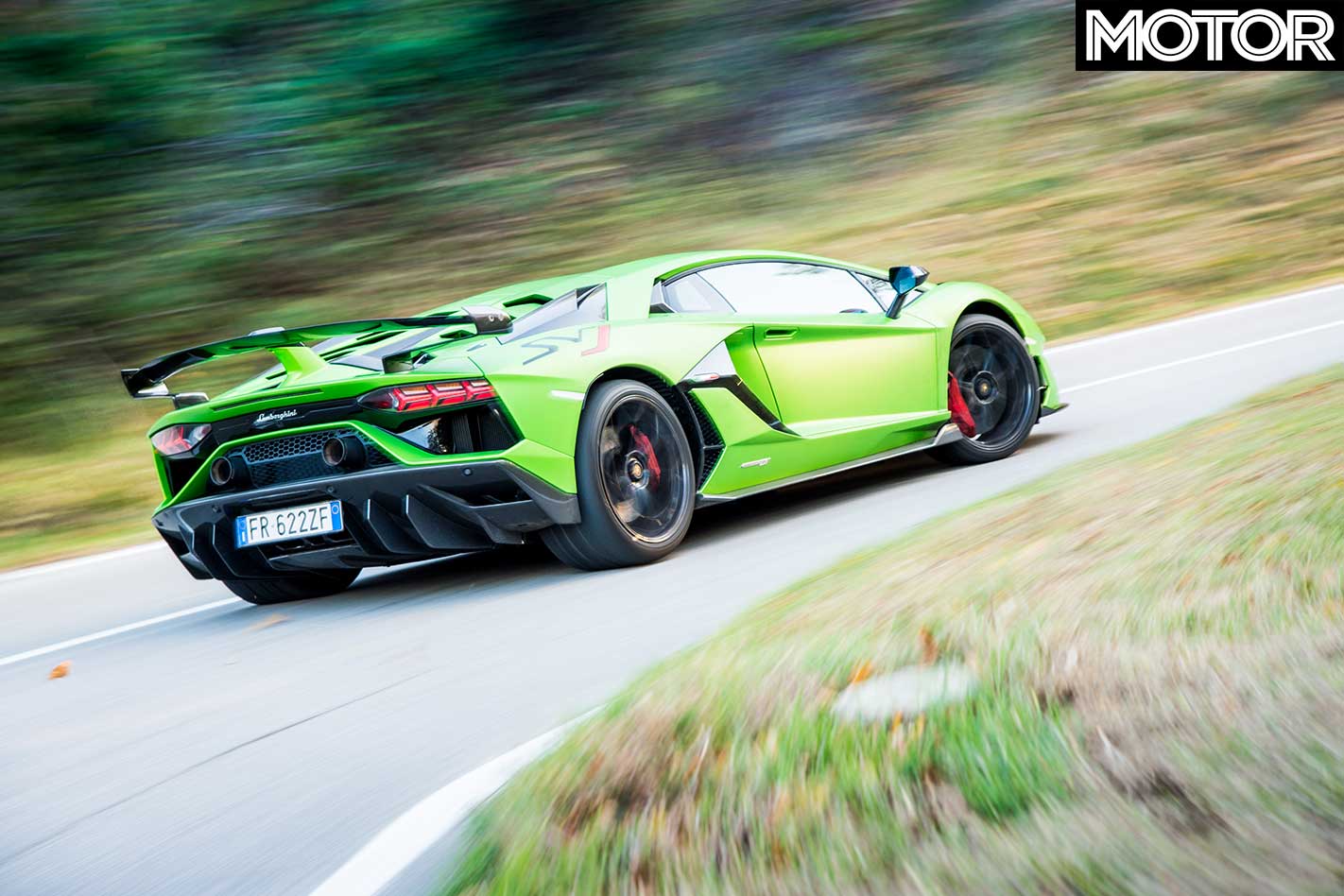
The locking action of the differential can also be parenthetical, while traction and grip are at times no more than subsets of the multi-layered roadholding capabilities. On slow and winding turf, snap understeer and oversteer are negative traits – and neither comes with an escape button.
The rear-wheel drive 812 encourages its jockey to gallop deeper and deeper into tight bends, while building plenty of momentum results in awesome lateral acceleration. You’re able to stimulate the driven wheels with generous boosts of torque while using the steering and throttle to massage the delicate cornering balance. In third gear, the engine utilises oodles of oomph from one braking zone to the next.
In fourth, short straights are inhaled whole without pausing for breath. In Race mode, full-throttle upshifts are so brutal it almost hurts. Thankfully, the brakes are simply sensational in terms of modularity, performance and stamina.
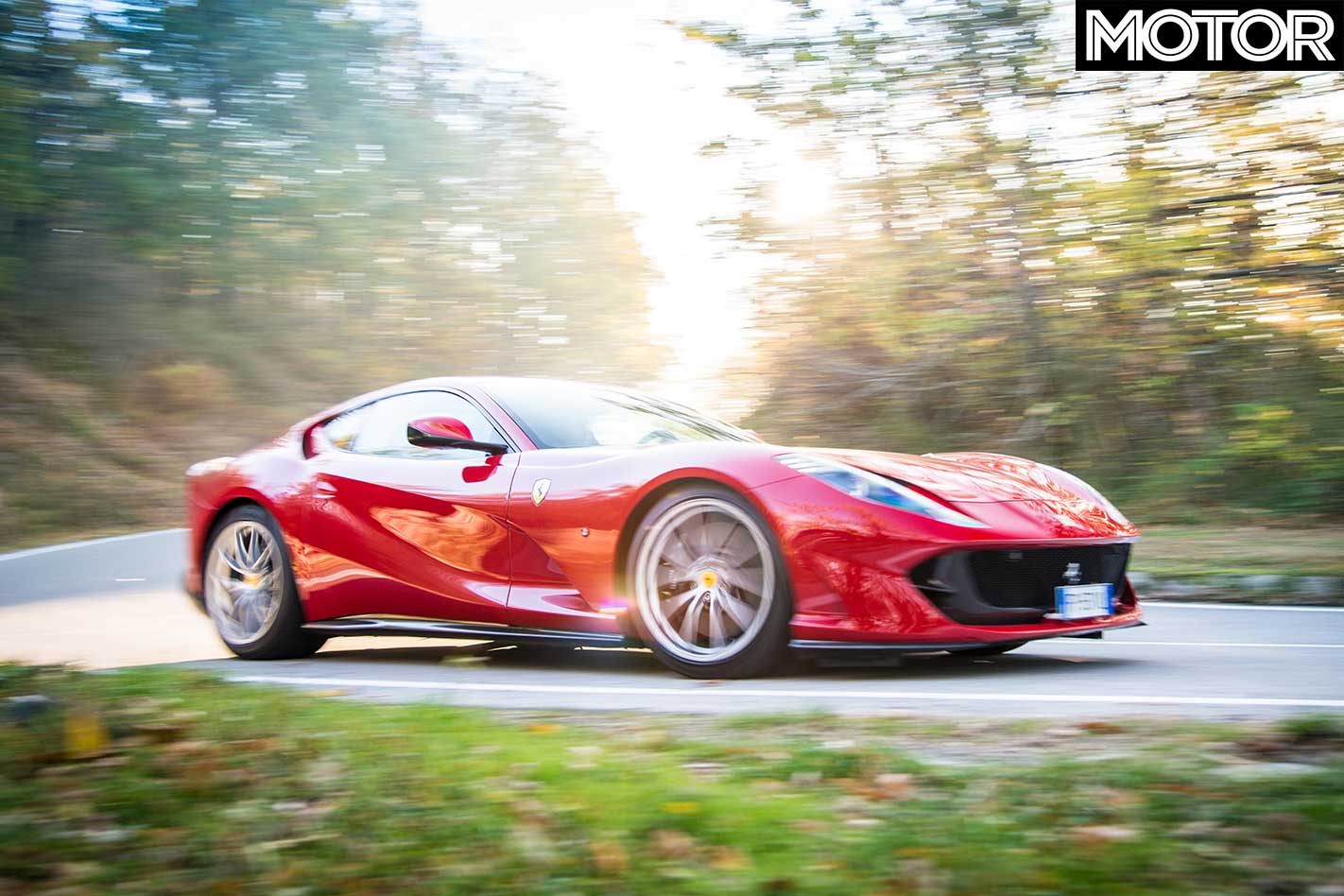
The two high-flyers hate unfinished or neglected roads. It’s not that the topography needs to be perfectly manicured, but smooth surfaces bode well. While the 812 can soften its dampers at a split-second command, the most extreme Aventador bottoms out, even in Strada mode, until the stability control light flashes. Admittedly the SVJ was never really designed for tight, European backroads.
Conversely, the Superfast feels somewhat less at home on a racetrack. Both cars feel blisteringly fast on flowing country roads or highway blasts where the incredible speed helps you cut through traffic like an invincible alien.
“Life can’t get any better than this,” is the verdict after an insane 20-minute stint in the Lamborghini. It’s utterly spellbinding and draining in equal measures, such is the intensity required behind the wheel.
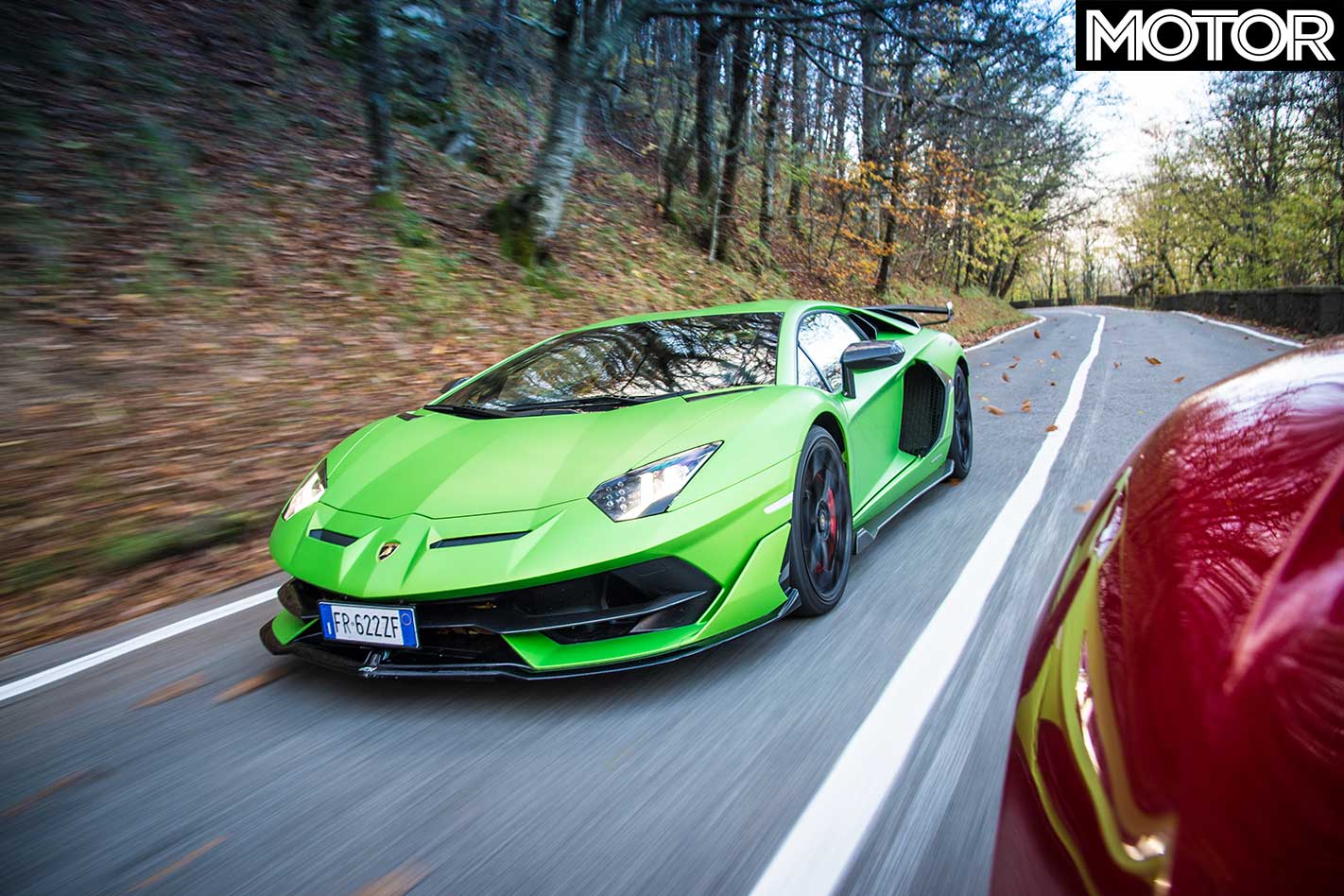
Jump into the Ferrari and the excitement and exertion levels are at the same high level despite the inherent differences between the two. After 480km, the only quality that sets them apart is about half an acre more cabin space in the Superfast.
The mid-engined and front-engined cars indulge in remarkably different road manners. In extreme, the Ferrari is quick to switch from nose-heavy to tail-happy. Under similar pressure, the Lamborghini is equally hard to work, but a touch faster to react thanks to the boon, and sometimes bane, of AWD.
Drive to the front axle helps, momentarily, pull the car out of trouble and straighten up a ragged line, but the trade-off is added weight and it numbs the steering when entering slow corners too fast, hampering manoeuvrability.
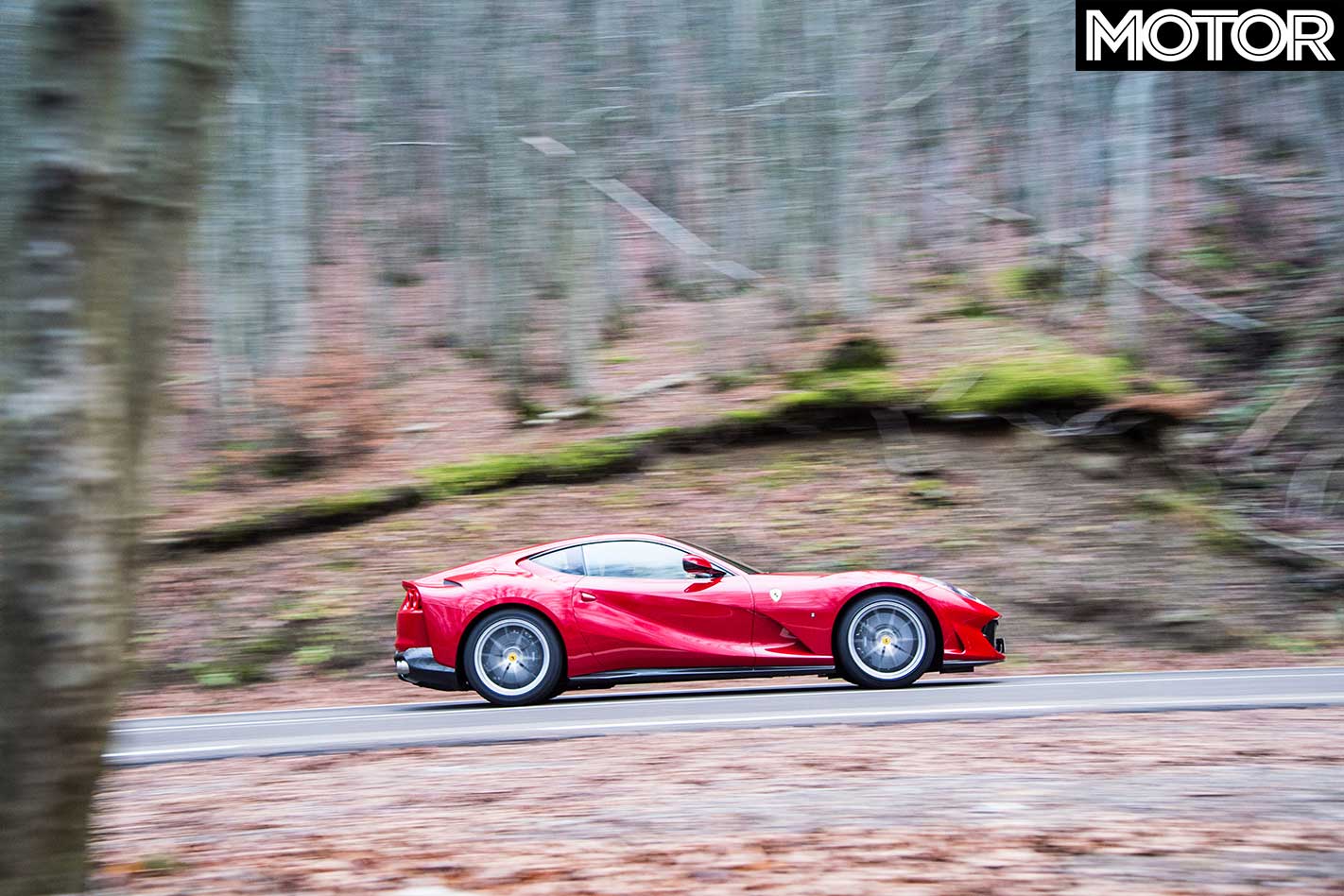
What about the rear steering, which is standard on both these supercars? It’s impossible to detect the transition from synchro-steer to counter-steer, but the virtual extension or shortening effect on the wheelbase is tangible. The turning circles remain relatively large and the dynamic driving modes don’t impact the steering action to the rear.
Cruising on the Autostrada, the Aventador’s venom is never more than a twitch of the right foot away. Overtaking is hilariously easy, the brakes clamp down with vigour at the flick of a switch, while the steering is heavy, yet ultra-direct with many levels of precision.
At speed, the dampers assume the lowest, tautest calibration, and the active aero (ALA) can either increase the downforce or reduce drag above 200km/h. Via invisible motorised flaps, the split ground effects system directs the airflow to the wheels that need the most downward pressure. Air enters the car, primarily through the nose, before it exits through the little ram vents in the rear wing.
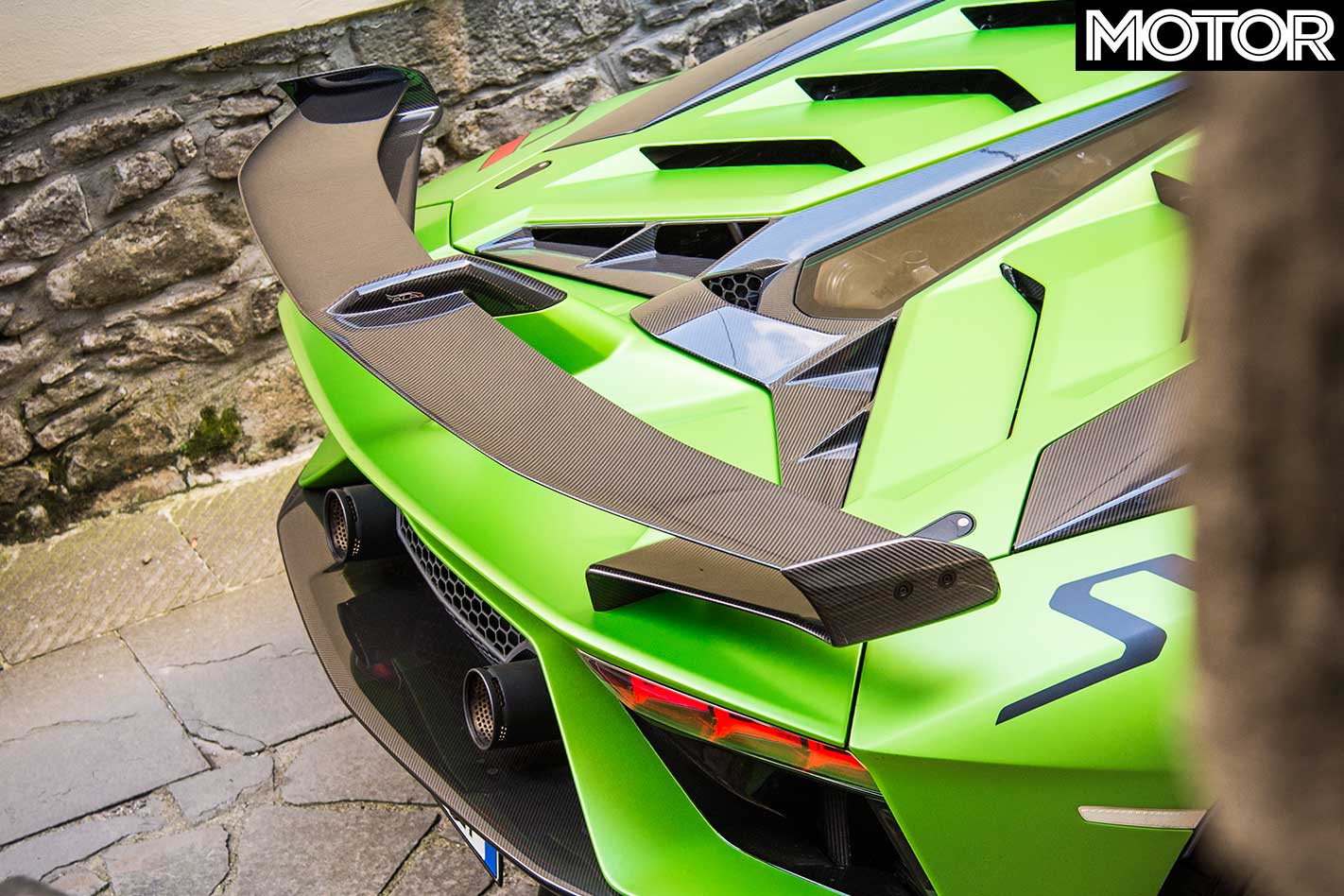
The 812 Superfast is emphatically rear-wheel drive. Even on a straight road, in the dry, with the throttle not fully depressed, you know with detail where the 588kW is being sent. While the transaxle layout results in a perfectly balanced weight distribution, there is always enough grunt on tap to alert the tricky electronically controlled mechanical LSD and summon the stability control.
In wet weather or when in Race mode, the eye of the torque hurricane is raging right in front of you. In tricky conditions with the ESC off, the Ferrari needs to be kept on a tight leash. Like its ‘rival’ here, the Superfast is aptly named in regards to normal traffic. It’s too radical for normal roads, too challenging for the rich, unskilled owners who will purchase it, and too vulnerable to qualify as a daily driver.
What sets the two beasts apart more than anything else is the vastly different packaging. If size matters, the SVJ gets instantly hit by a dozen penalty points for burdensome entry and exit, tight racing seats, a pedal box too narrow for size 13 shoes, and a lack of headroom and visibility. Also, the mix of ex-R8 ergonomics and Bologna red-light district instrumentation still doesn’t look right years after the launch.
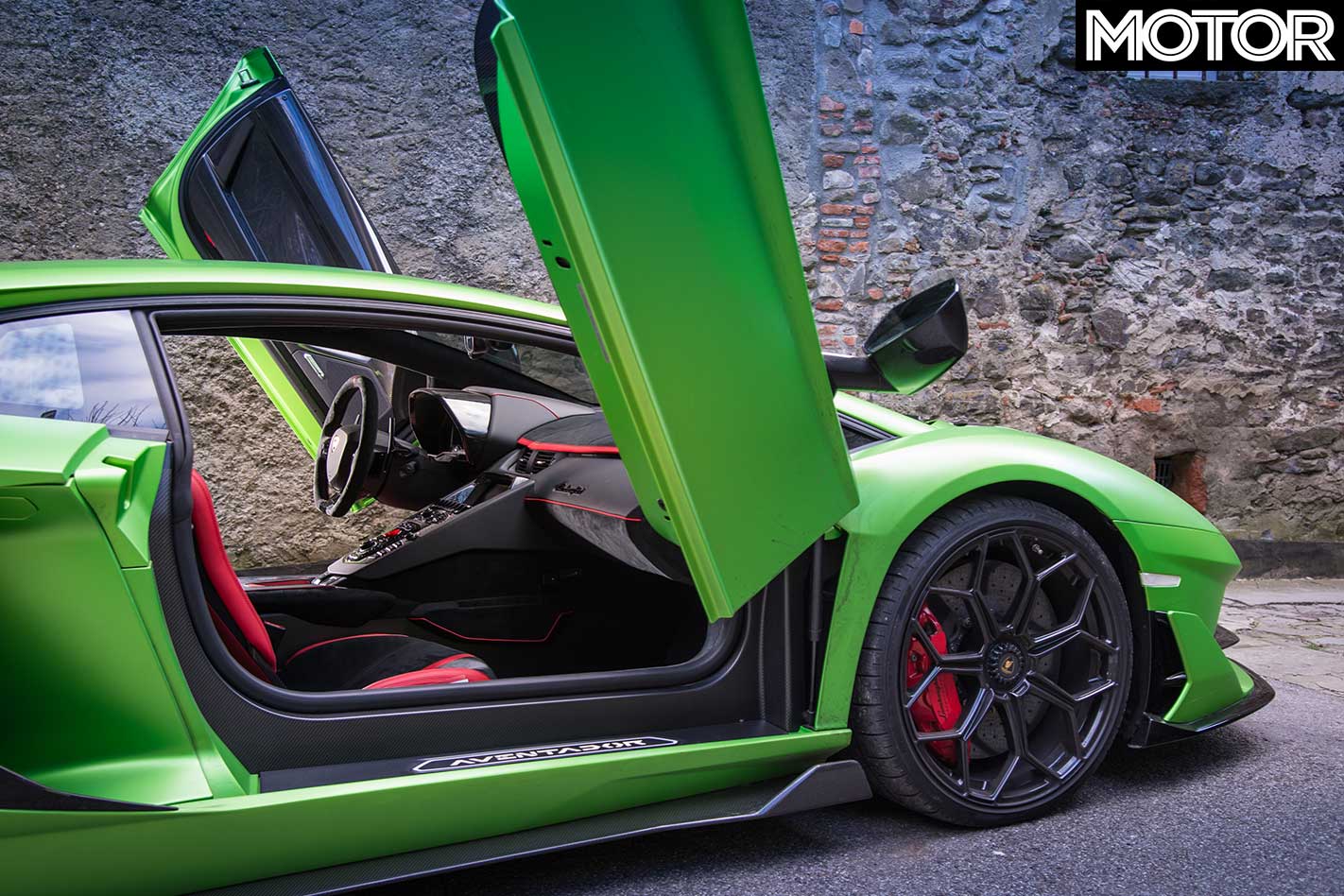
In contrast to the Lambo’s embryonic driving position, the Ferrari is almost a sportsman suite on big wheels. Even the racing seats accommodate all sizes, legroom is a relief, visibility is impressive, and the iconic Manettino dial drive mode selector tweaks the car’s manners with aplomb in one easy lesson. Dislikes? A front end that is long enough to drop out of sight in dense fog, the fiddly secondary controls and the open arms turning circle.
So, ultimately, given brand cachet and performance are on similar levels, the final assessment is really a matter of interpretation and personal preference. Naturally, a red Ferrari tends to grab all the headlines – and for good reason. But as soon as the matte green rocketship arrives, onlookers are torn between heritage and outlandish design. The inner rhetoric plays a similar tune.
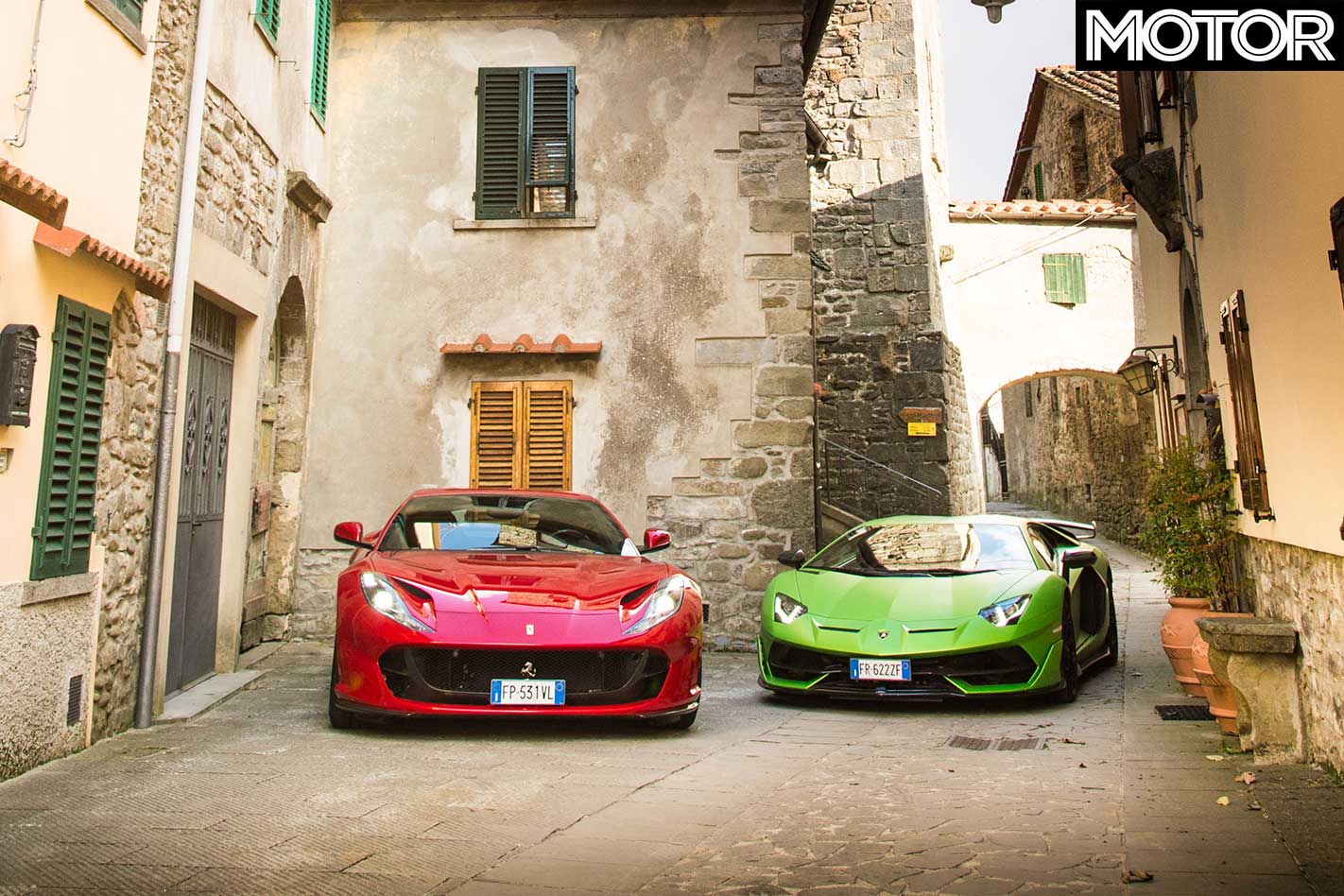
Choosing between these two V12s is as subjective as favouring red wine over white, blonde hair over black, or classical music over pop. The Lamborghini engine marks the ultimate evolution of a legend that is almost as old as the brand. Sadly its use-by date is fast approaching; the 6.5-litre 12 is being cut down in its prime. But it isn’t a curdling mess and the SVJ milks every bit of excitement out of the epic unit. The Ferrari is powered by a more advanced and economical engine, yet as soon as the red mist descends and revs soar, it’s every bit as explosive and resounding as its countryman.
The future of motoring might well turn out to be electric or full of alternative fuels, but right here, right now, we can’t help but turn a blind eye to it all – ignorance is bliss… And if that doesn’t work, for the time being, 24 howling cylinders create enough of a mechanical orchestra to drown out that looming reality. This is as good as it gets.
Fast Facts
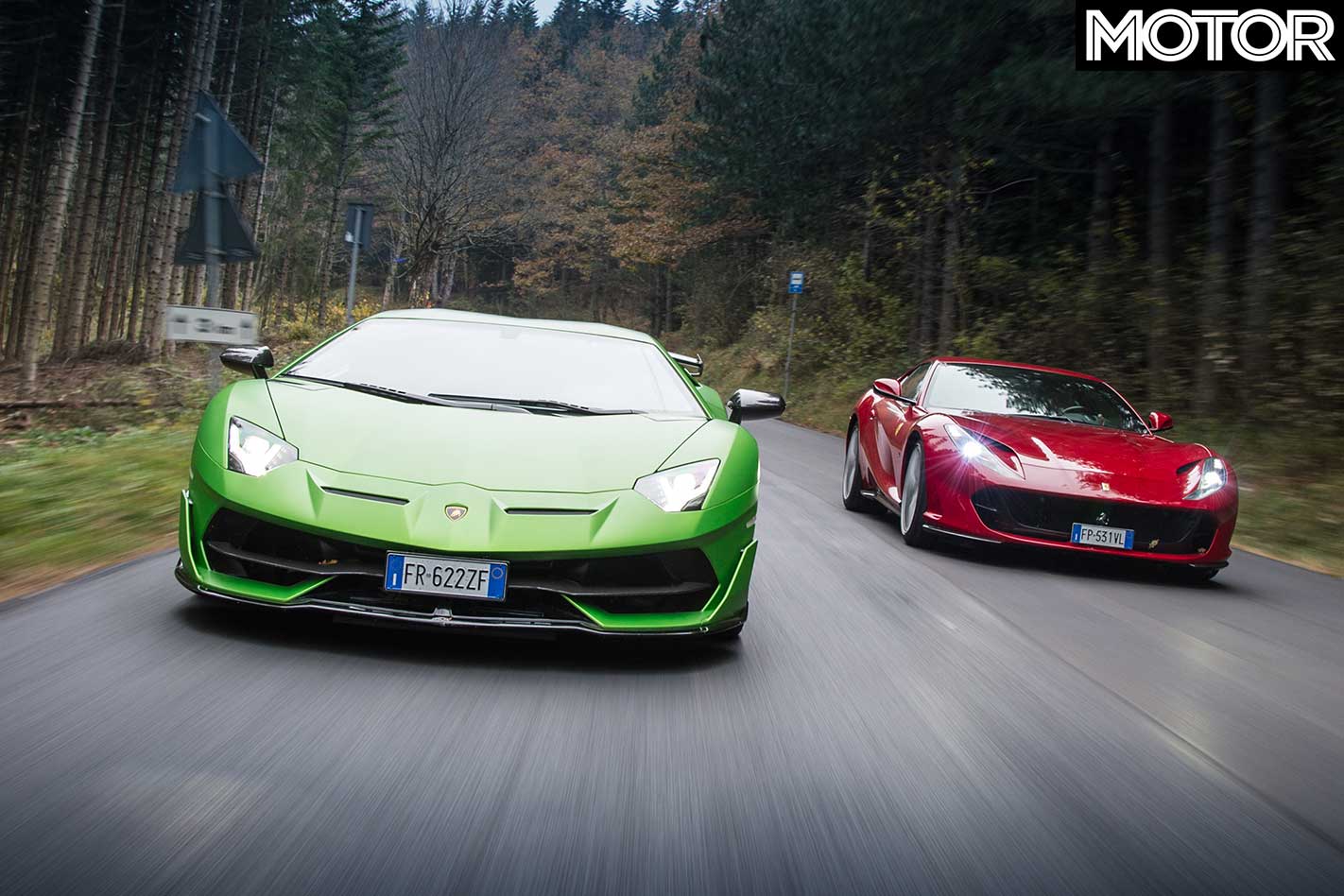
| u00a0 | Lamborghini Aventador SVJ | Ferrari 812 Superfast |
| Body | 2-door, 2-seat coupe | |
| Drive | all-wheel | rear-wheel |
| Engine | 6498cc V12, DOHC, 48v | 6496cc V12, DOHC, 48v |
| Bore x Stroke | 95.0 x 76.4mm | 94.0 x 78.0mm |
| Compression | 11.8:1 | 13.6:1 |
| Power | 566kW @ 8500rpm | 588kW @ 8500rpm |
| Torque | 720Nm @ 6750rpm | 718Nm @ 7000rpm |
| Power/Weight | 371kW/tonne | 386kW/tonne |
| Transmission | 7-speed dual-clutch | |
| Weight (dry) | 1525kg | |
| Suspension (f) | double A-arms, pushrod inboard coilovers, adaptive dampers, anti-roll bar | double A-arms, adaptive dampers, anti-roll bar |
| Suspension (r) | double A-arms, pushrod inboard coilovers, adaptive dampers, anti-roll bar | multi-links, adaptive dampers, anti-roll bar |
| L/W/h | 4943/2098/1136mm | 4657/1971/1276mm |
| Wheelbase | 2700mm | 2720mm |
| Tracks | 1720/1680mm (f/r) | 1672/1645mm (f/r) |
| Steering | hydraulically-assisted rack-and-pinion | electrically-assisted rack-and-pinion |
| Brakes (f) | 400mm ventilated carbon-ceramic discs, 6-piston calipers | 398mm ventilated carbon-ceramic discs, 6-piston calipers |
| Brakes (r) | 380mm ventilated carbon-ceramic discs, 4-piston calipers | 360mm ventilated carbon-ceramic discs, 4-piston calipers |
| Wheels | 20.0 x 9.0-inch (f); 21.0 x 13.0-inch (r) | 20.0 x 10.0-inch (f); 20 x 11.5-inch (r) |
| Tyre Sizes | 255/30 ZR20 (f); 355/25 ZR21 (r) | 275/35 ZR20 (f); 315/35 ZR20 (r) |
| Tyres | Pirelli P Zero Corsa | Pirelli P Zero TM |
| Price | $949,640 | $609,888 |
| Pros | Dramatic looks; atmo stonk and response; V12 howl | Front-engine style; comfort; performance; V12 howl |
| Cons | Jerky transmission; cramped cabin; last of its kind | Turning circle; secondary controls; last of its kind |
| Rating | 5 out of 5 stars | 5 out of 5 stars |





